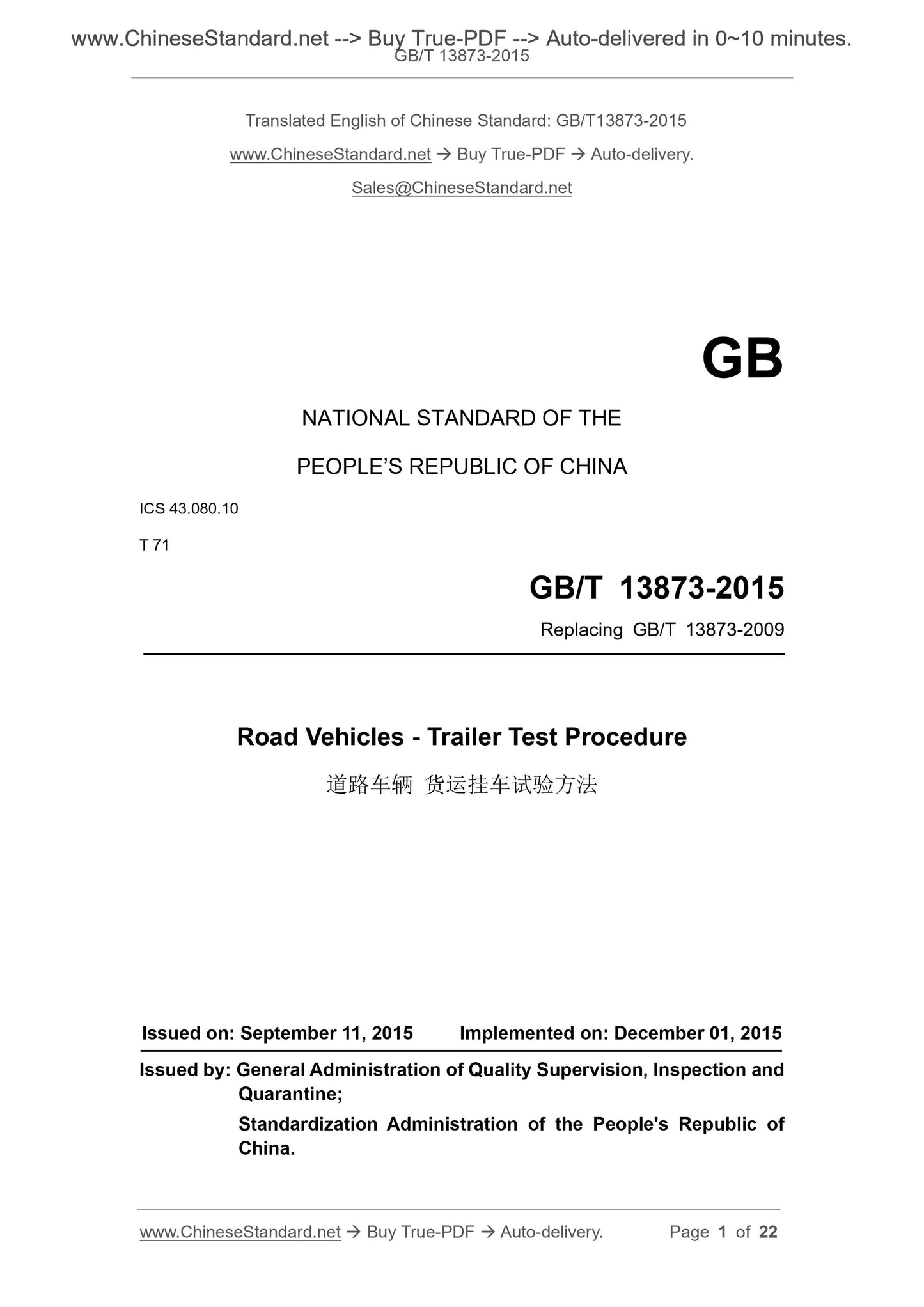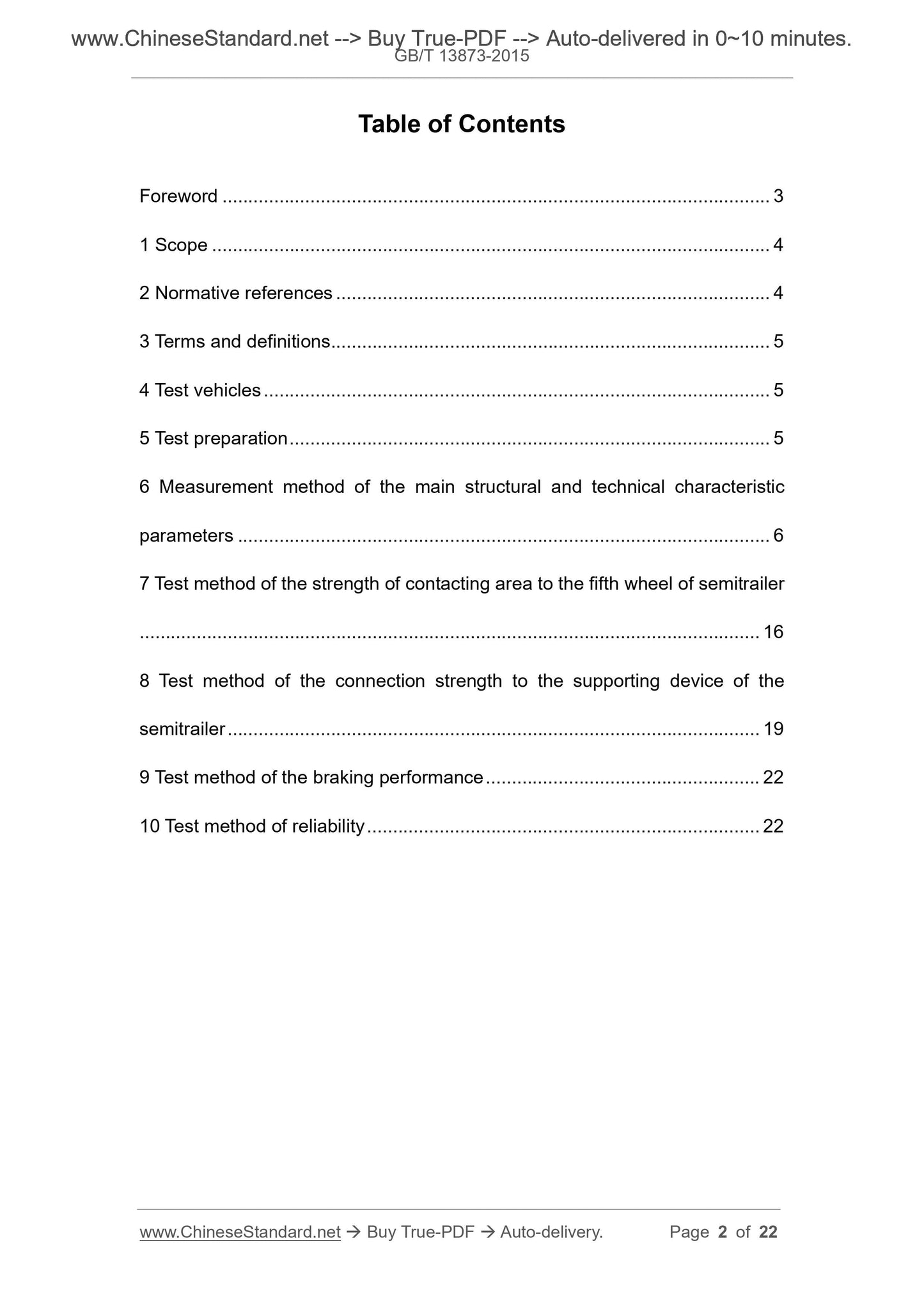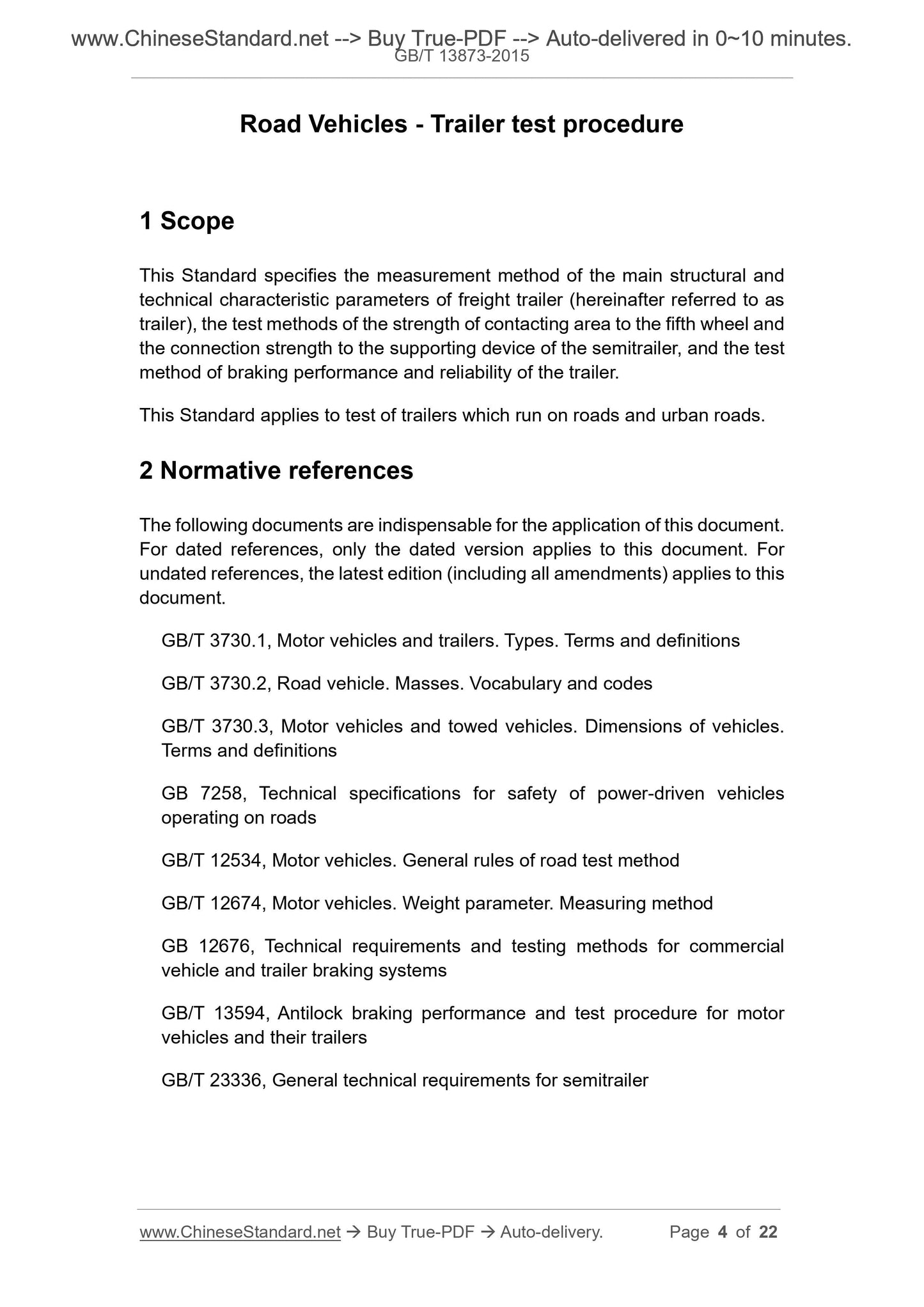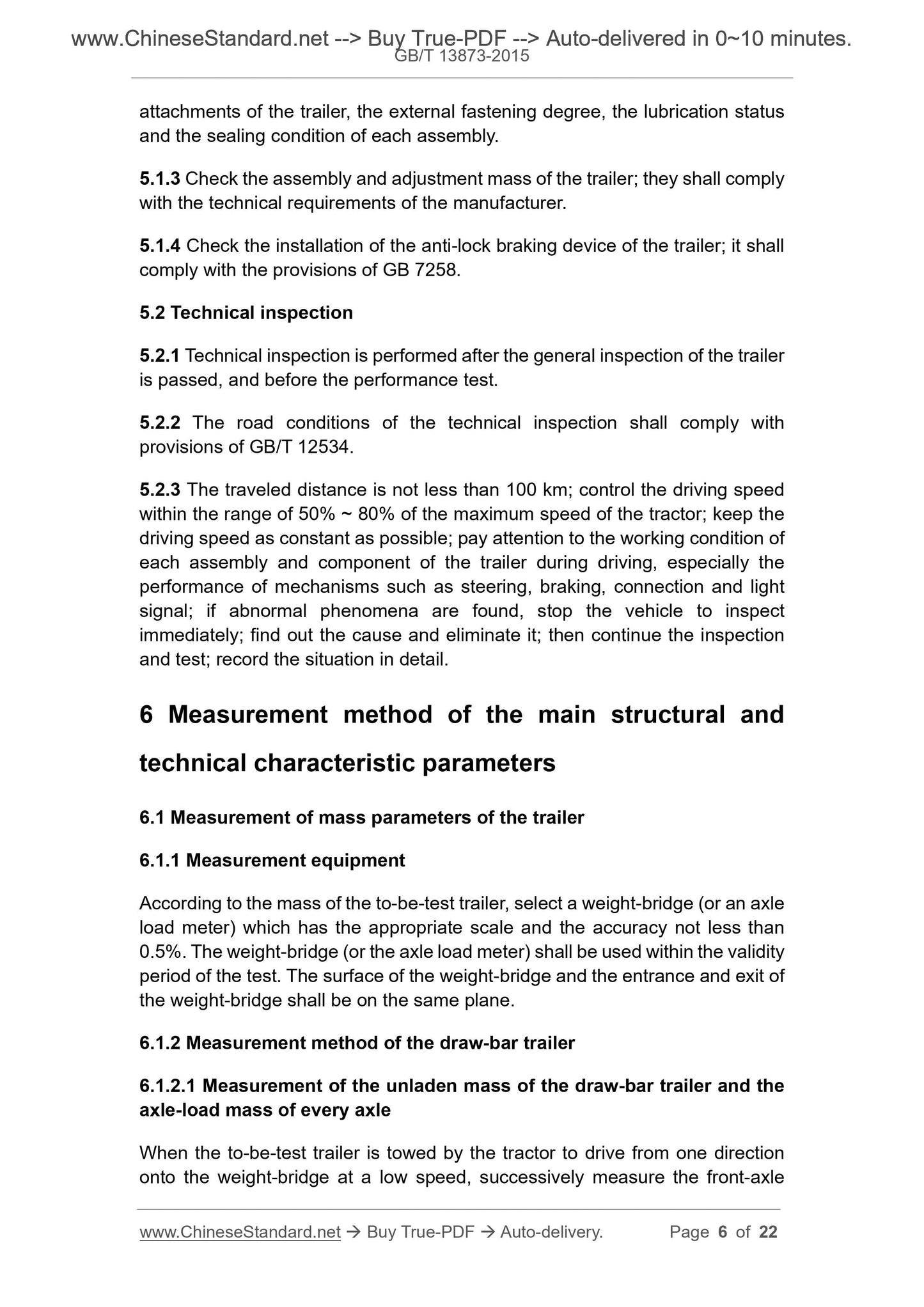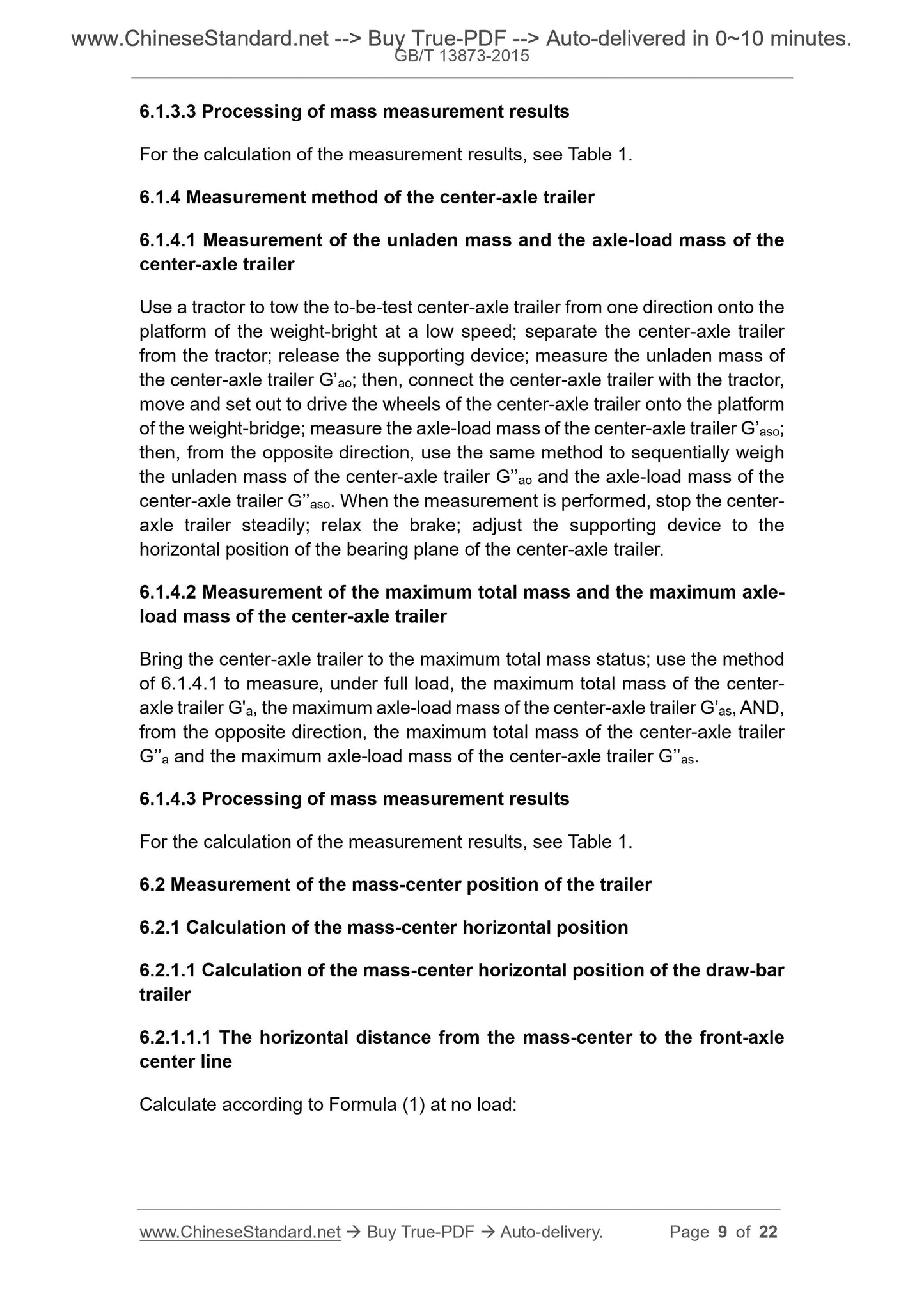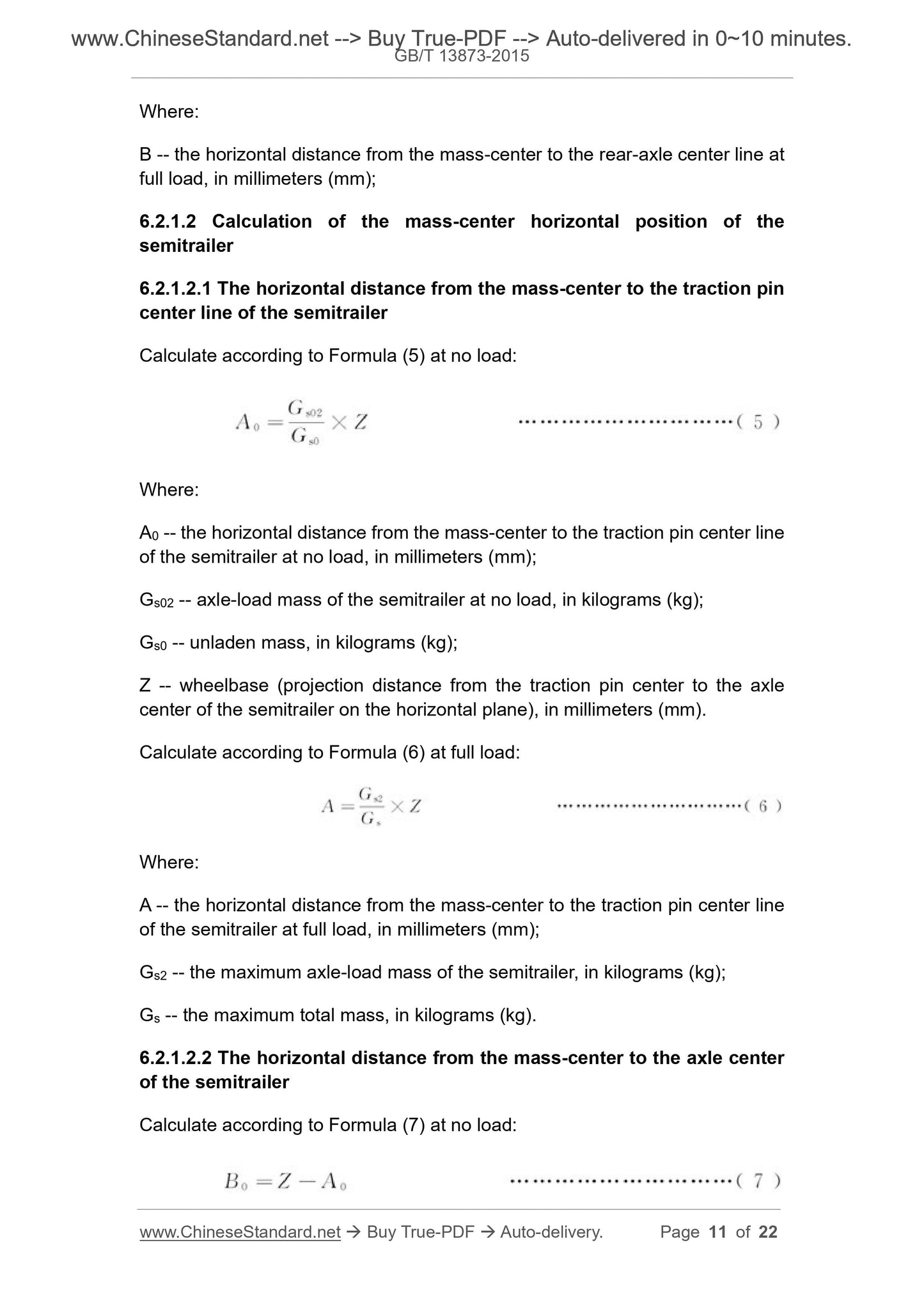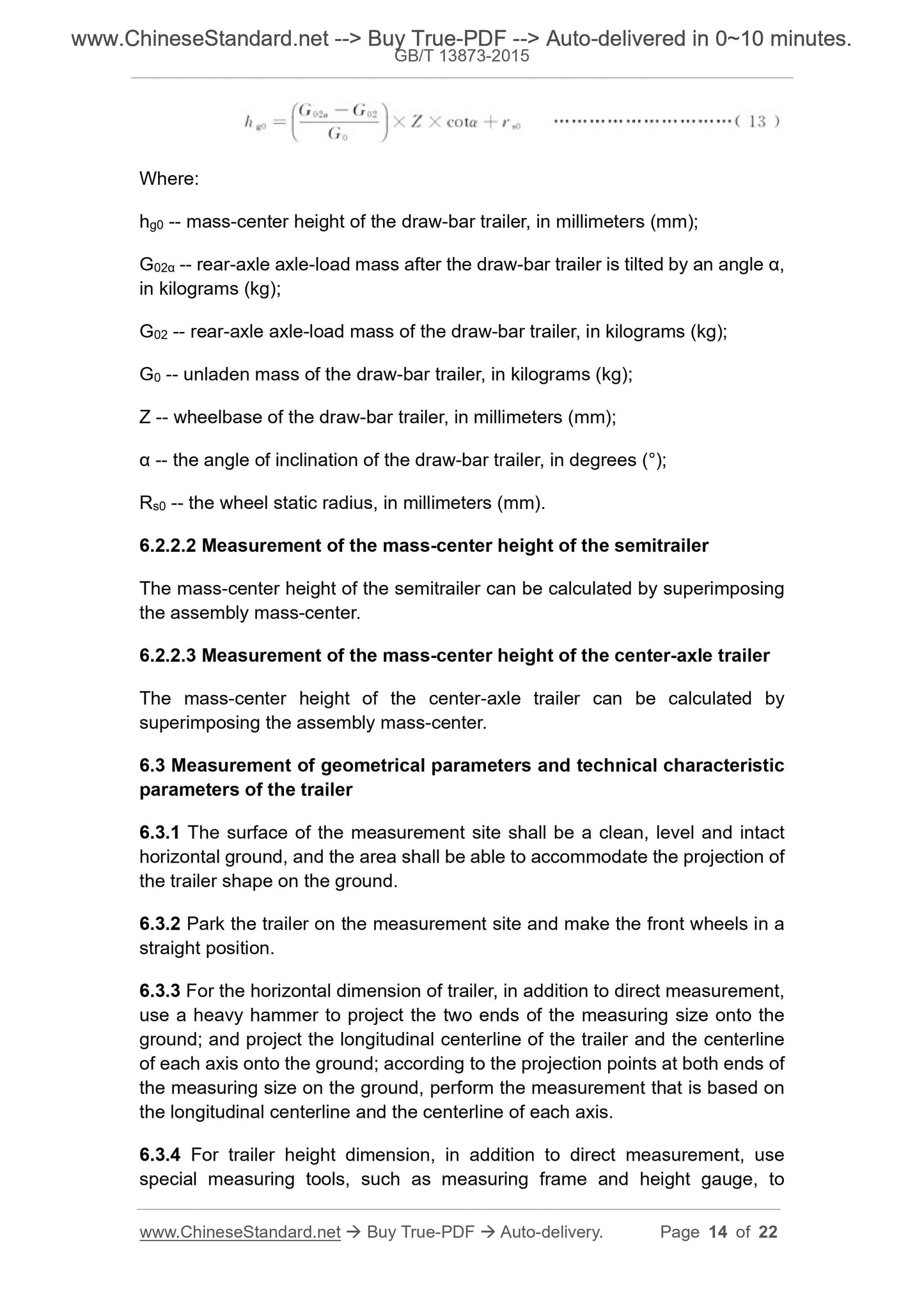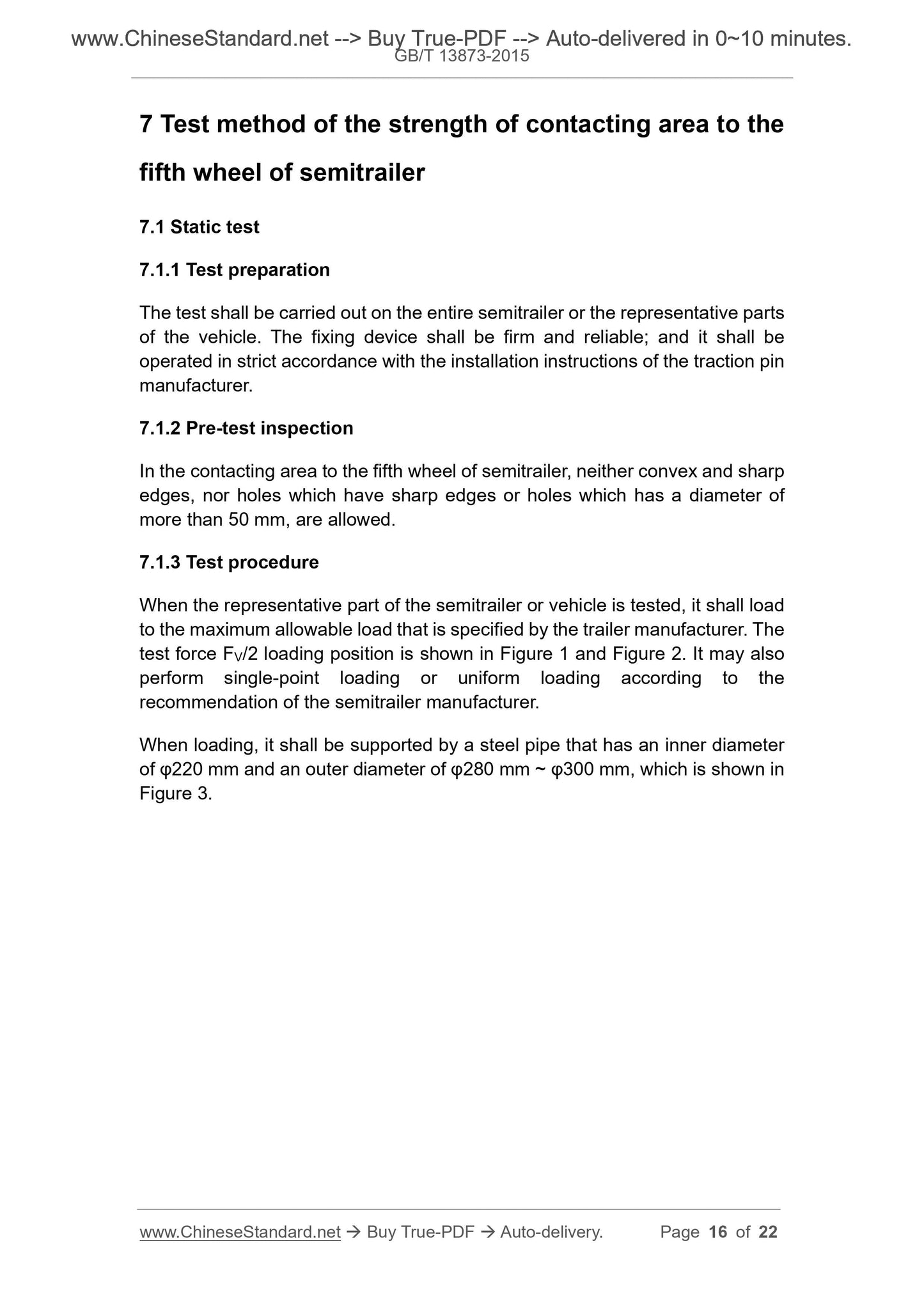1
/
of
8
www.ChineseStandard.us -- Field Test Asia Pte. Ltd.
GB/T 13873-2015 English PDF (GB/T13873-2015)
GB/T 13873-2015 English PDF (GB/T13873-2015)
Regular price
$150.00
Regular price
Sale price
$150.00
Unit price
/
per
Shipping calculated at checkout.
Couldn't load pickup availability
GB/T 13873-2015: Road Vehicles - Trailer Test Procedure
Delivery: 9 seconds. Download (and Email) true-PDF + Invoice.Get Quotation: Click GB/T 13873-2015 (Self-service in 1-minute)
Newer / historical versions: GB/T 13873-2015
Preview True-PDF
Scope
This Standard specifies the measurement method of the main structural andtechnical characteristic parameters of freight trailer (hereinafter referred to as
trailer), the test methods of the strength of contacting area to the fifth wheel and
the connection strength to the supporting device of the semitrailer, and the test
method of braking performance and reliability of the trailer.
This Standard applies to test of trailers which run on roads and urban roads.
Basic Data
| Standard ID | GB/T 13873-2015 (GB/T13873-2015) |
| Description (Translated English) | Road Vehicles - Trailer Test Procedure |
| Sector / Industry | National Standard (Recommended) |
| Classification of Chinese Standard | T71 |
| Classification of International Standard | 43.080.10 |
| Word Count Estimation | 15,195 |
| Date of Issue | 2015-09-11 |
| Date of Implementation | 2015-12-01 |
| Older Standard (superseded by this standard) | GB/T 13873-2009 |
| Quoted Standard | GB/T 3730.1; GB/T 3730.2; GB/T 3730.3; GB 7258; GB/T 12534; GB/T 12674; GB 12676; GB/T 13594; GB/T 23336 |
| Regulation (derived from) | National Standard Announcement 2015 No.25 |
| Issuing agency(ies) | General Administration of Quality Supervision, Inspection and Quarantine of the People's Republic of China, Standardization Administration of the People's Republic of China |
| Summary | This Standard specifies the freight trailer (hereinafter referred to as the trailer) determination of the structure and main technical parameters, the semi-trailer fifth wheel connection region and the support strength strength testing method, as well as trailer brake performance and reliability of the test method to connect. This Standard applies on highways and city roads trailer test. |
Share
